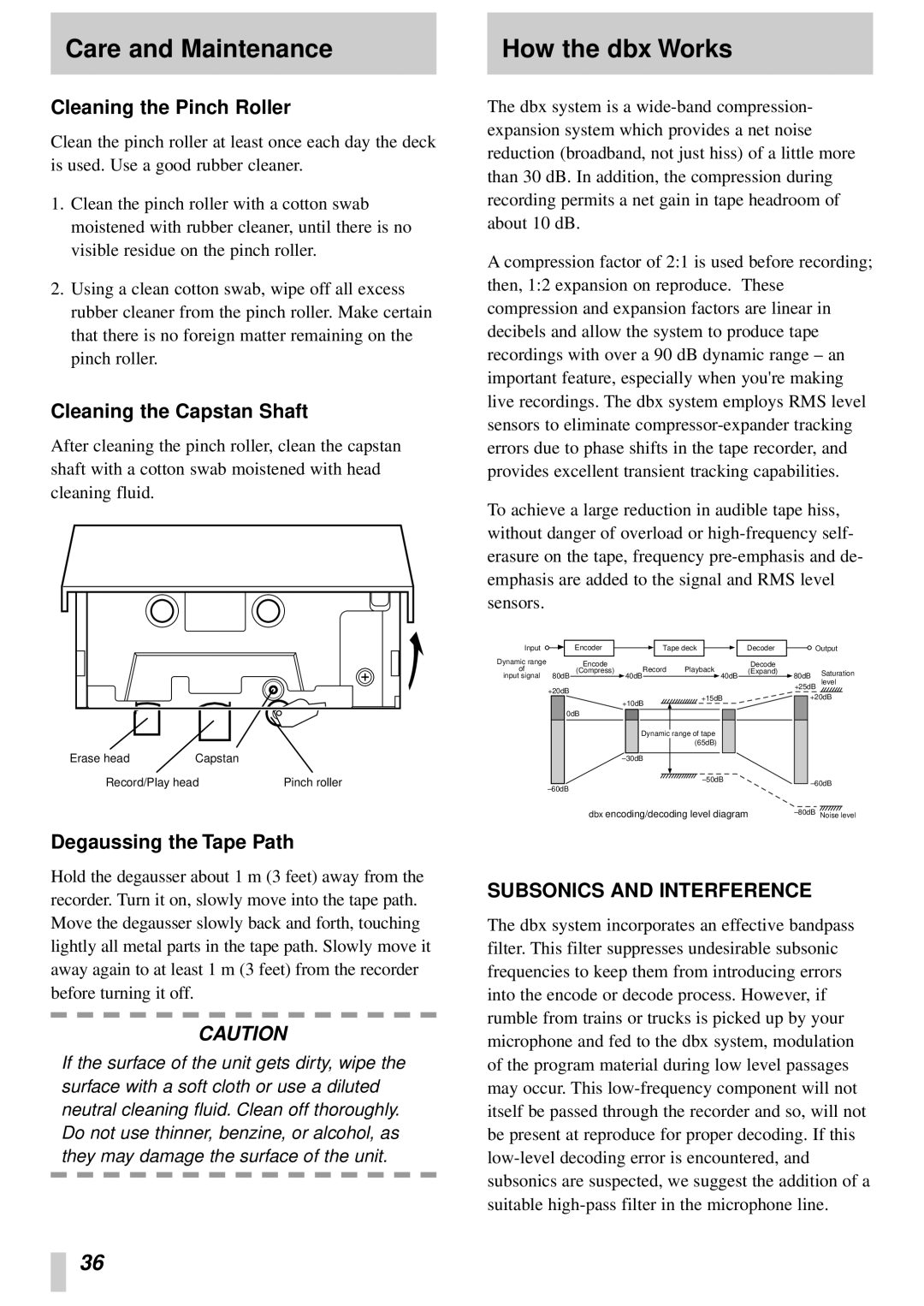
Care and Maintenance
Cleaning the Pinch Roller
Clean the pinch roller at least once each day the deck is used. Use a good rubber cleaner.
1.Clean the pinch roller with a cotton swab moistened with rubber cleaner, until there is no visible residue on the pinch roller.
2.Using a clean cotton swab, wipe off all excess rubber cleaner from the pinch roller. Make certain that there is no foreign matter remaining on the pinch roller.
Cleaning the Capstan Shaft
After cleaning the pinch roller, clean the capstan shaft with a cotton swab moistened with head cleaning fluid.
Erase head | Capstan |
|
Record/Play head | Pinch roller | |
Degaussing the Tape Path
Hold the degausser about 1 m (3 feet) away from the recorder. Turn it on, slowly move into the tape path. Move the degausser slowly back and forth, touching lightly all metal parts in the tape path. Slowly move it away again to at least 1 m (3 feet) from the recorder before turning it off.
CAUTION
If the surface of the unit gets dirty, wipe the surface with a soft cloth or use a diluted neutral cleaning fluid. Clean off thoroughly. Do not use thinner, benzine, or alcohol, as they may damage the surface of the unit.
How the dbx Works
The dbx system is a
A compression factor of 2:1 is used before recording; then, 1:2 expansion on reproduce. These compression and expansion factors are linear in decibels and allow the system to produce tape recordings with over a 90 dB dynamic range – an important feature, especially when you're making live recordings. The dbx system employs RMS level sensors to eliminate
To achieve a large reduction in audible tape hiss, without danger of overload or
Input | Á Encoder | Á | Tape deck | Á | Decoder | Output | ||
Dynamic range | Encode |
|
|
|
| Decode |
|
|
of | (Compress) | Record | Playback |
| (Expand) | Á80dB | Saturation | |
input signal | 80dB | Á40dB |
| Á40dB |
| |||
| +20dB |
|
|
|
|
| +25dB | level |
|
|
| +15dB |
|
| +20dB | ||
|
| +10dB |
|
|
| |||
| 0dB |
| Á |
|
|
|
| |
|
|
|
|
|
|
|
| |
|
| Dynamic range of tape |
|
|
|
| ||
|
|
|
| (65dB) |
|
|
|
|
|
|
|
|
|
|
|
| |
|
|
|
| Á |
|
|
|
|
|
|
|
|
|
| |||
|
|
|
|
|
| |||
|
|
|
|
|
|
|
| |
| dbx encoding/decoding level diagram | Noise level | ||||||
SUBSONICS AND INTERFERENCE
The dbx system incorporates an effective bandpass filter. This filter suppresses undesirable subsonic frequencies to keep them from introducing errors into the encode or decode process. However, if rumble from trains or trucks is picked up by your microphone and fed to the dbx system, modulation of the program material during low level passages may occur. This
36
